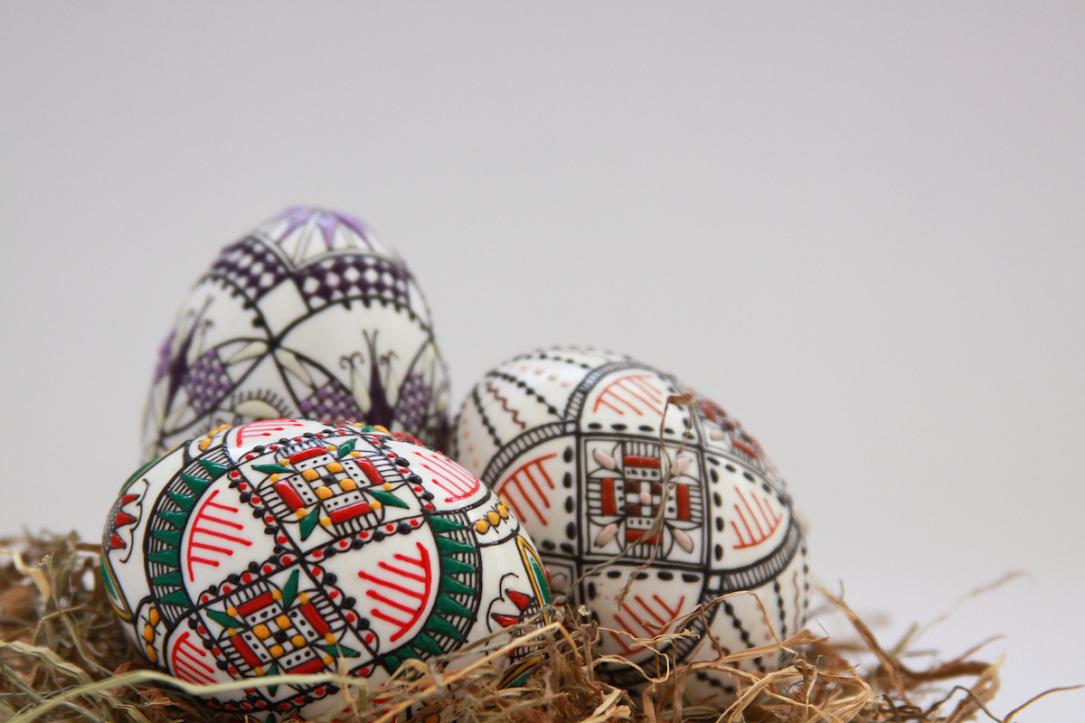Spending Easter in Romania: holiday traditions

Easter, or the Resurrection of Christ, is one of the most celebrated Christian holidays in the world. Every country has its own way of celebrating Easter, through different traditions and customs. Learn about the main features of the Easter holiday in Romania so you know what to expect if you're spending this holiday in our country. (This article was updated on April 11, 2023)
In Romania, many Easter traditions have been preserved until now. The celebrations start with the Good Week, which begins with Palm Sunday when Jesus entered Jerusalem and ends with Easter Sunday when Christ resurrected. During this week, final preparations are made for the big celebration.
On Good Thursday, also called Holy Thursday, people take food and drink to the church. On the same day, the boiled eggs are painted because it is believed that if the eggs turn red on Holy Thursday, they will keep without spoiling all year. The prominent color for Easter eggs is red, but other colors like yellow, green or blue are also used.
In Romania, you will also see a special kind of painted eggs, with different geometrical and floral motifs, all with different colors on the same egg. The egg painting ritual has been kept to date, but only a few people still master the art of egg painting. The process involves various paints and wax. This type of painted egg would make a great gift to your loved ones living elsewhere in the world. Most of the colored eggs on Easter can be eaten as they are boiled. These special eggs, however, are emptied of their content so you will buy only a colored, light shell.
Another tradition is that of tapping eggs on Easter day. Children usually compete to see whose egg has the thickest crust and can tap and break all the other eggs. This is usually done with normal, colored eggs that can be eaten afterwards. The eggs tapping game also involves a saying with religious connotation: the first person says 'Christ has resurrected' (in Romanian, 'Hristos a inviat'), while the second goes “True, he has resurrected" (in Romanian, 'Adevarat a inviat').
Good Friday is also called the Friday of Sufferings because Jesus was crucified on this day. A tradition that has been kept in Romania is that of placing flowers at the church for Christ and passing under the table three times, signifying the pains Christ had when he carried his cross to his crucifixion. On the night between Holy Saturday to Easter Sunday, people go to church to celebrate the Resurrection of Christ by attending the midnight mass, where they light candles. After that, they take the lighted candles home to have the holy light in their homes, souls and lives.
On Easter Sunday morning, people usually go to church for the Easter morning mass. This mass is, however, less attended than the midnight one. After that, they return home and eat the blessed food they took with them to the church.
In Bucovina, on the night of Easter, there is the custom of "fires vigilance". Fires are lit on the hills, and they would burn all night.
In Transylvania, young girls are sprayed with perfume by the boys dressed in traditional clothes on Easter Monday. This way, they say girls will have good luck all year. In Maramures, children go to friends and neighbors to announce the Resurrection of Christ.
If you happen to spend Easter in a traditional Romanian family (or at a guest house that respects the holiday tradition), you will see several specific dishes on the table for the occasion. You will not miss pasca, the traditional Romanian Easter cake, the sweet bread cozonac, which is a slightly sweet yeast-raised egg bread, the lamb soup, lamb steak, haggis (drob) - which is a traditional national Easter dish that uses the organs of the lamb, and of course the painted eggs.
Keep in mind that many Romanians are religious, so they will go to church on Saturday night to get the holy light into their homes and lit candles in cemeteries at their loved ones' graves. They would also respect the lent period, which ends on Saturday evening - perhaps one of the reasons the Easter lunch is usually a very rich one after the 48 days of lent. This is the most restrictive lent period in the Orthodox calendar.
newsroom@romania-insider.com
(Photo source: Raul Baldean | Dreamstime.com)












